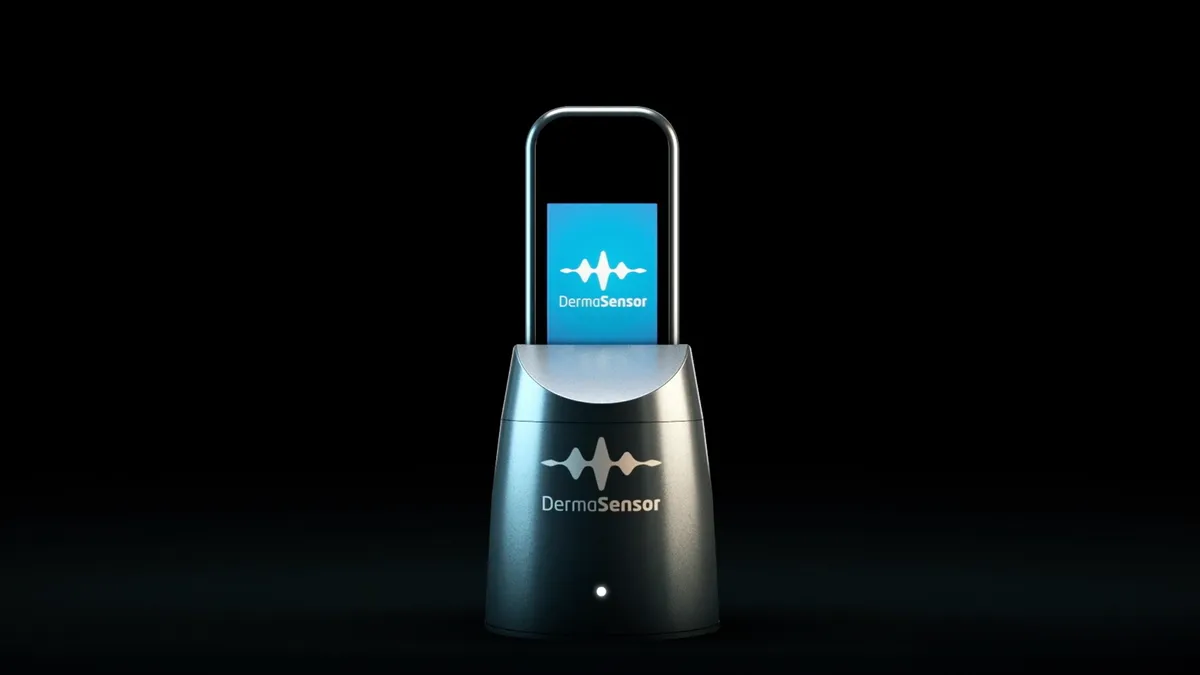Dive Brief:
- Dermasensor’s wireless, handheld device designed to detect common skin cancers was cleared through the de novo pathway.
- The device uses artificial intelligence (AI) to analyze light scattered back from skin lesions. Cancerous and benign lesions reportedly give off different light signatures because of cellular and subcellular changes in tumors, according to Dermasensor, and the AI is trained to detect those distinct patterns.
- Dermasensor received Food and Drug Administration clearance after a Mayo Clinic-led clinical trial found the overall sensitivity of the device for malignancy detection was 96%, compared to 83% for primary care physicians.
Dive Insight:
Most skin cancers are curable if detected early, but timely diagnosis requires primary care physicians to correctly determine that a mole could be cancer. A 2018 analysis of melanoma detection studies found cancers “will be missed if visual inspection is used on its own” and warned the “evidence to support its accuracy in the range of settings in which it is used is flawed and very poorly reported.”
At that time, however, the researchers concluded “published algorithms do not appear to improve accuracy.”
Work on algorithms has continued since the study. The algorithm in Dermasensor’s device was trained on over 20,000 spectral recordings from more than 4,500 skin lesions.
To validate the device, Dermasensor funded a 22-site, 1,005-patient blinded clinical trial. The primary care physicians predicted whether lesions would be malignant prior to biopsy and achieved a sensitivity of 83%. Dermasensor’s device had a sensitivity of 96%. The device’s sensitivity was highest for basal and squamous cell carcinoma (98% and 99%, respectively) and lowest for melanoma (88%).
A second, smaller trial found the diagnostic sensitivity of primary care physicians rose from 67% to 88% when they were supported by the device. That study found no significant change in diagnostic specificity. The overall specificity of the device in the larger study was 21%.
Dermasensor is now preparing to commercialize the device by building a waitlist of physicians who want to receive the product when it becomes available in their area. The device previously received a CE mark.
Correction: A previous version of this story incorrectly stated the Dermasensor device was cleared through the 510(k) pathway.











